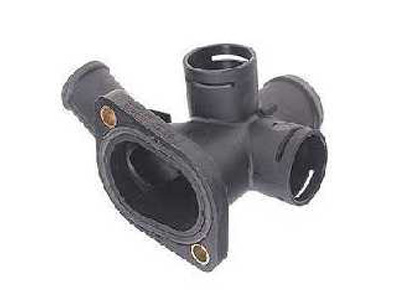Here are the key components of an auto cooling system
2023-12-22
The auto cooling system is an essential component of a vehicle that helps regulate the engine's temperature, preventing it from overheating. Overheating can cause serious damage to the engine, so the cooling system is crucial for maintaining the engine's operating temperature within a safe range. Here are the key components of an auto cooling system:
1. Radiator: The radiator is a heat exchanger that dissipates heat from the coolant. It is usually located at the front of the vehicle, behind the grille, and consists of a series of tubes and fins through which coolant flows.
2. Coolant: Coolant, also known as antifreeze, is a mixture of water and additives that help regulate the engine temperature. It has a lower freezing point and a higher boiling point than water alone, providing protection in various weather conditions.
3. Water Pump: The water pump circulates coolant throughout the engine and the radiator. It is typically belt-driven and helps maintain a consistent flow of coolant to prevent overheating.
4. Thermostat: The thermostat regulates the flow of coolant through the engine and radiator based on the engine's temperature. It opens and closes to maintain the optimal operating temperature.
5. Cooling Fans: Electric or mechanical cooling fans help enhance the airflow through the radiator, especially during low-speed or stationary conditions. Fans are activated when the engine reaches a certain temperature.
6. Cooling Fan Clutch (if applicable): In vehicles with mechanical cooling fans, a fan clutch engages or disengages based on the engine temperature, controlling the fan's speed.
7. Heater Core: The heater core is a small radiator-like component that is part of the vehicle's heating system. It uses hot coolant to provide warmth to the interior of the vehicle.
8. Expansion Tank (Overflow Reservoir): The expansion tank allows for the expansion and contraction of coolant as it heats up and cools down. It also serves as a reservoir for excess coolant and provides a way to monitor coolant levels.
9. Pressure Cap: The pressure cap is located on the radiator or the expansion tank and helps regulate the pressure in the cooling system. It raises the boiling point of the coolant and prevents it from boiling over.
10. Hoses: Various hoses connect the different components of the cooling system, allowing the flow of coolant. Over time, hoses can deteriorate and may need to be replaced to prevent leaks.
Regular maintenance of the cooling system, including checking coolant levels, inspecting hoses, and replacing coolant as recommended by the vehicle manufacturer, is crucial to ensure the system's proper function and prevent overheating. Monitoring the temperature gauge on the vehicle's dashboard can help detect potential cooling system issues before they lead to serious engine damage.



